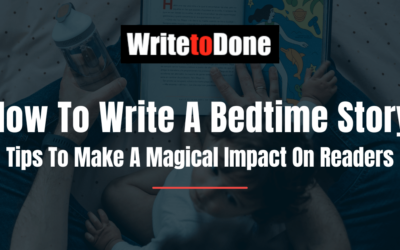Okay, so your single book story jumped to an idea for a nifty book series but … now what?
Even the best of series ideas can miss the mark after only one book.
Ever come to a screeching halt while reading a series because the story just fell apart? Or the character changed? Maybe you moaned, “What is this author doing?”
Not everyone will love every book in a series. There will always be some readers who set your series to the side as times goes on. But readership can also take a plunge and no author wants that to happen.
Good news:
Scary as that is, there are some basic reasons a series fails—and there are ways to avoid them.

Take the Leap to Writing a Series
First, what TYPE of series are you writing (open or closed)? That factor can guide many of your decisions along the way, decisions that can make or break any set of books.
It is like taking any leap: The more you know about the distance, the terrain on the other side, and what is in your way, the better footing you can have before you jump off.
The two most common options are:
- A closed-ended serial, for example a trilogy, that has an overarching problem that is concluded in the final book. It is like a jump over a single, tall barrier, with a distinct landing pad on the other side.
- An open-ended series in which the protagonist continues to solve cases, explore new worlds, or pursue whatever activity suits your ongoing storyline. That is like running the hurdles, one after the other, without necessarily having the final one in sight.
An earlier WTD article on writing a series, How to Boost Your Career as a Writer by Creating an Irresistible Series, examined several types of series potentials that a writer might choose. If you haven’t read it yet, see that article to determine which type is best suited for you and your story idea.
Already have a series type in mind? Great.
Next comes the question: “So what do I do now?”
If you are the organized list-maker type, your skills will help immensely in planning a series. But what if you are like many writers who prefer to allow a story to evolve as their characters grow through the circumstances they face? That’s a tough road to travel for a series.
The WTD article, Warning: Are You at Risk of a Story Collapse? by Dale Kutzera shows the four problem areas that can make a single story fall apart and how some strategic planning can help. These same problem areas loosely apply to a series, with a couple additional factors to consider.
Recognizing the Hurdles to a Series:
A closed-ended serial is like one really long story, broken into sections (books). Each book should include enough backstory woven into it so readers can follow it without reading the previous book. Each book also should provide at least some satisfaction and conclusion at its end.
The hurdle: There needs to be an over-arching story, something that is the ‘Big Problem’ which each book works toward resolving but only the final book resolves. It can be tricky planning this Big Problem and weaving it deftly into every book while still providing satisfactory books along the way.
In an open-ended series each book stands alone without any overarching Big Problem. There may be smaller threads of problems that weave through the books, like the protagonist still looking for recognition or still seeking romance, but these are not the primary issues in the books. These are typically mysteries (like Susan Furlong’s cozy The Georgia Peach Mysteries) or adventure books (like James Patterson’s long-running stories featuring Alex Cross).
The hurdle: Learning how to keep these ongoing stories fresh and interesting with characters that don’t eventually bore your readers.

Knock Down the Barriers:
Facing those hurdles involves four basic problem areas, and knowing your series type can help determine how to handle each problem.
Fading Characters
We all love certain people in our lives and want them to improve their situations, grow and thrive. But we don’t want them to change so much that we don’t recognize them! The same is true for your protagonist. Your readers want to know this character inside and out. They like seeing changes and growth but only within the parameters of that character’s basic personality.
Create a list of traits for your character and then split it into two lists, one of traits that you (and readers) will enjoy having consistently demonstrated and another of traits your character could improve on a bit.
- Closed-ended Serials:
Plan which of those changing traits might come into focus through the specific events in each book. Your final book would show the most important character growth for your protagonist, with all the changes in previous books leading up to it. - Open-ended Series:
Since open-ended stories continue without an end in sight, emphasize your character’s permanent traits in each book, with just minor revelations along the way. He may have thrills and agonies as he takes on a new love in his life, his family grows, and friends come and go, but a favorite character’s basic traits should remain consistent to his devoted fans.
Flailing Plot
As you write, you might discover that your plot has issues. If a plot is too big, it can be too complex to follow or too unbelievable. If it is too small, there won’t be enough traction to hold readers. If you are working toward a series, these problems are multiplied.
When you plan an overall series plot, the key is to first think of your big picture. Begin with a single goal statement about the major purpose of this whole series.
- Closed-ended Serials:
In a serial, your goal statement will be specific, something like “Finding his wife’s killer” or “Stopping the Emperor from taking over the galaxy.” Expand on that by then defining the major actions or situations that will work your character toward that goal.Each of those major actions can become a book. Each book will have a conclusion to its specific conflict, yet at the same time each book—and its conclusion—is a distinct step building toward the ultimate satisfaction of the overall series goal. - Open-ended Series:
In an open-ended series, each story is working toward a finite solution to that particular book. Your overall series goal statement will reflect something more generic and long-reaching, like “solving the crimes in this troubled city” or “exploring new worlds.” There is no final goal—there will always be more crimes to solve or more worlds to explore.In this case, don’t rush to escalate the problems in each book or you could end up with nowhere left to go. Instead use varying situations and new minor characters to invigorate the plot for each book. Each new situation is a one more life event for your protagonist, not a step toward an ultimate end.
Forgetting Details
Readers love to plunge into the world you create for them, including all the little details. They are tenacious in recalling those small things—so you need to be as well.
For any book or series:
- Create a list of character traits for each character that includes not just what they look like, but also the little quirks and background details that make them full-bodied.
- Keep a list of details for each major location, large and small, like rooms, houses, towns, etc.
- Track the facts. From the form of government to the type of vegetation or method of interstellar propulsion, know the facts you’ll use and refer to them as you write.
- Start a list of any details that you discover as you write. Sometimes new things just pop up and that is fine, but maintain consistency by adding them to your lists and including them in later scenes.
Factoring in Freshness
Although it is important to stay on familiar grounds for your readers, you also don’t want the stories to feel stale. Offer the thrill of a change of scene as you balance familiar aspects with fresh elements along the way.
- Closed-ended Serials:
Each book can enjoy a different setting for a portion of the book and a few different minor characters. These are fresh elements that invigorate each book for readers even though the overall story is still headed for a single destination: the final book in your serial. - Open-ended Series:
Decide which factors must stay consistent for a long-running, open-ended series. It may be the location, the characters, or their jobs. Keep that one factor consistent, then use the other factors to add fresh accents.For example, Lillian Jackson Braun’s town of Pickax in Moose County is the stable factor for her detective team of Qwilleran and his two Siamese cats in her The Cat Who Mystery Series. In each of her 29 books, Qwilleran faces new characters or situations but within the setting of this community.In Clive Cussler’s A Dirk Pitt Adventure series, Pitt’s work with his team in his fictional NUMA federal agency is the stable and consistent factor. His readers enjoy fresh new sights and sounds in each book as Dirk and his team sail the oceans of the world.

Transform Your Single Story Into a Complete Series
Understanding and choosing the type of series that best suits your story is an important first step in the leap to creating a series. Then pave your way to a long-run writing career by reviewing the four factors that can be most troublesome to writers.
Between creating interesting characters who grow just enough; plots that fit your series pattern; and consistent details coupled with fresh factors, your readers will return again and again to read your stories.
Let me know in the comments which type of series best suits your story idea?

















